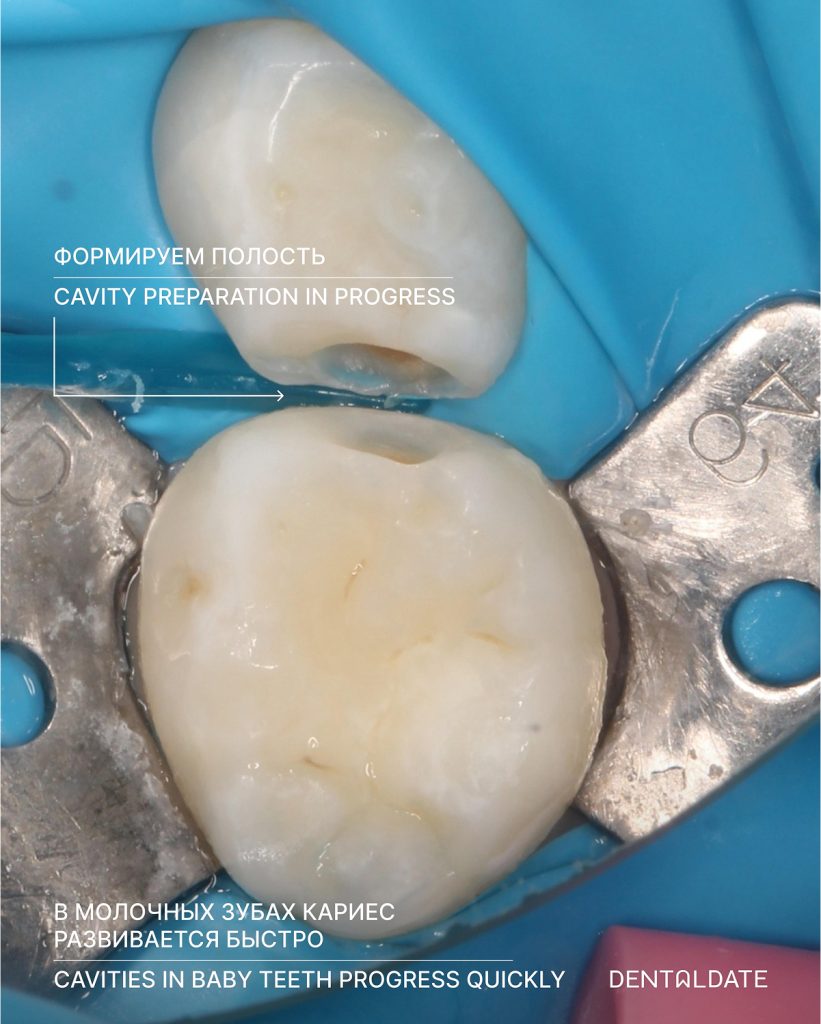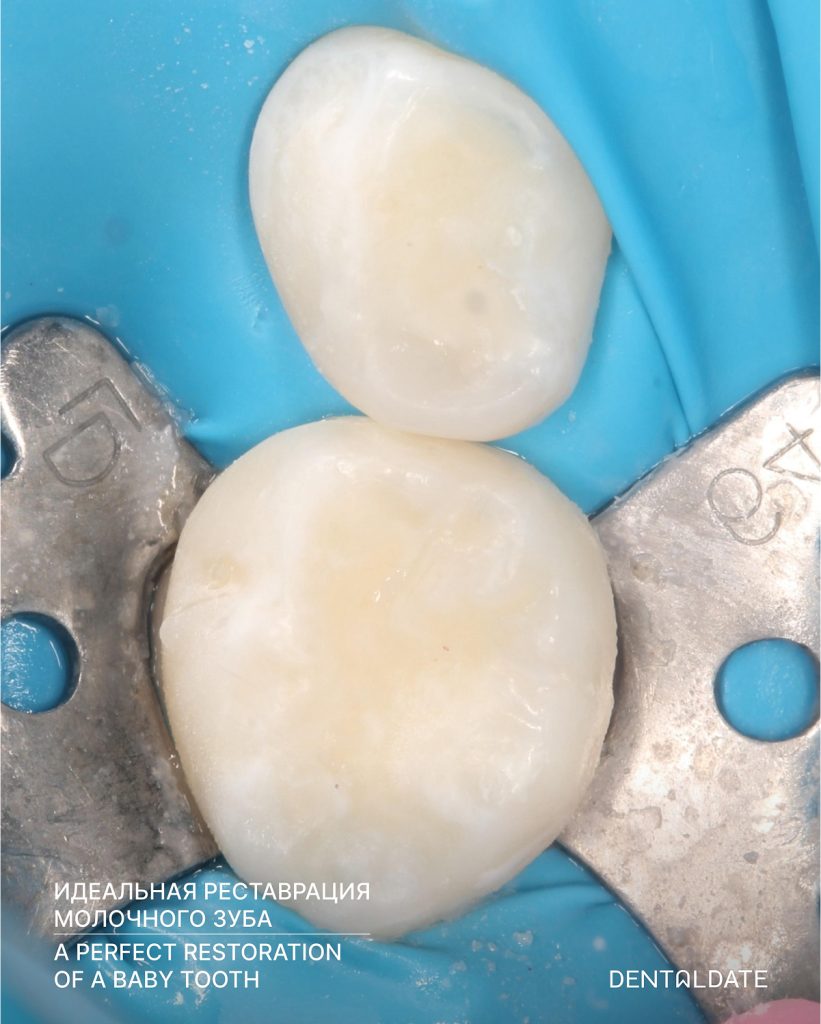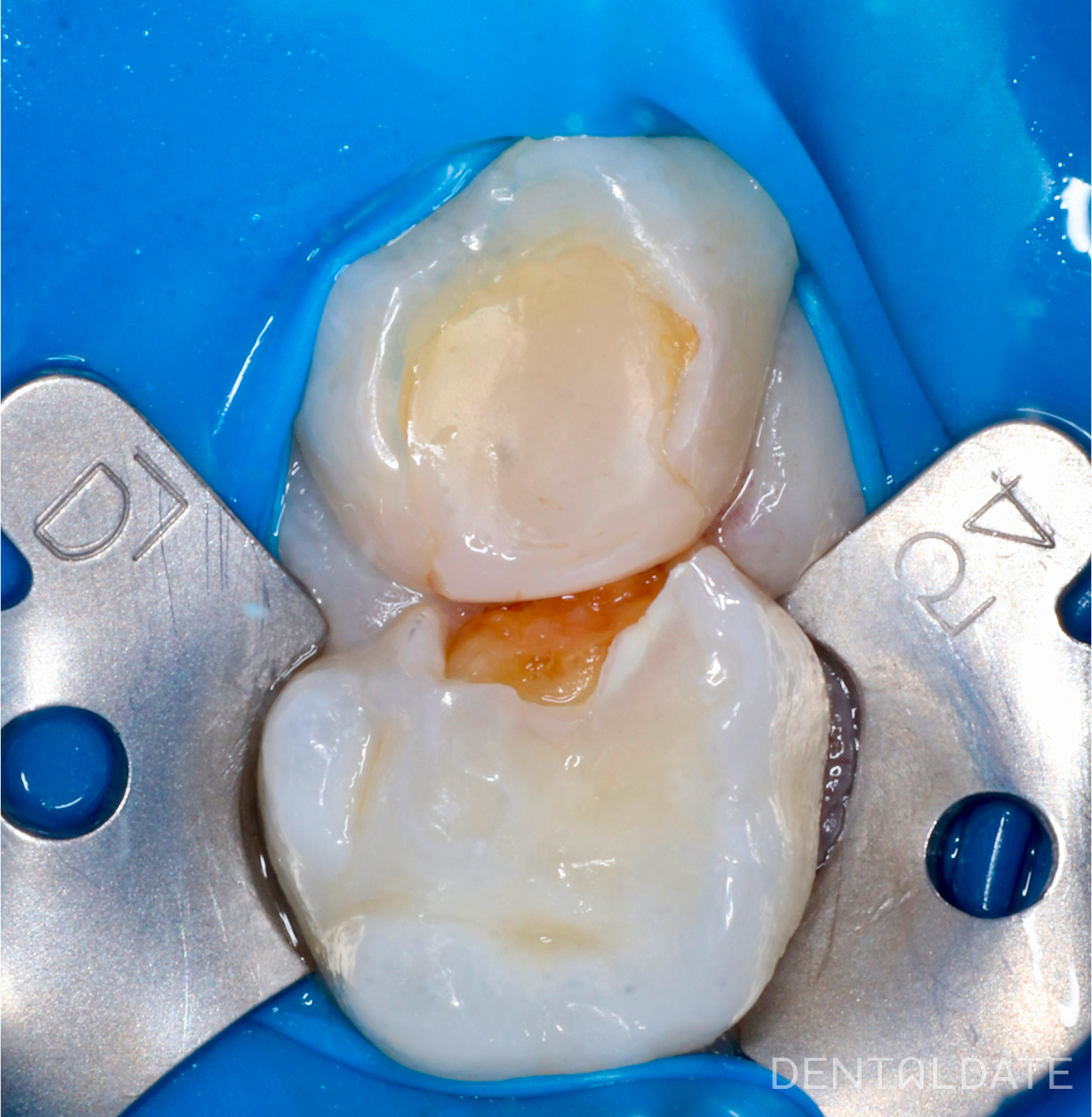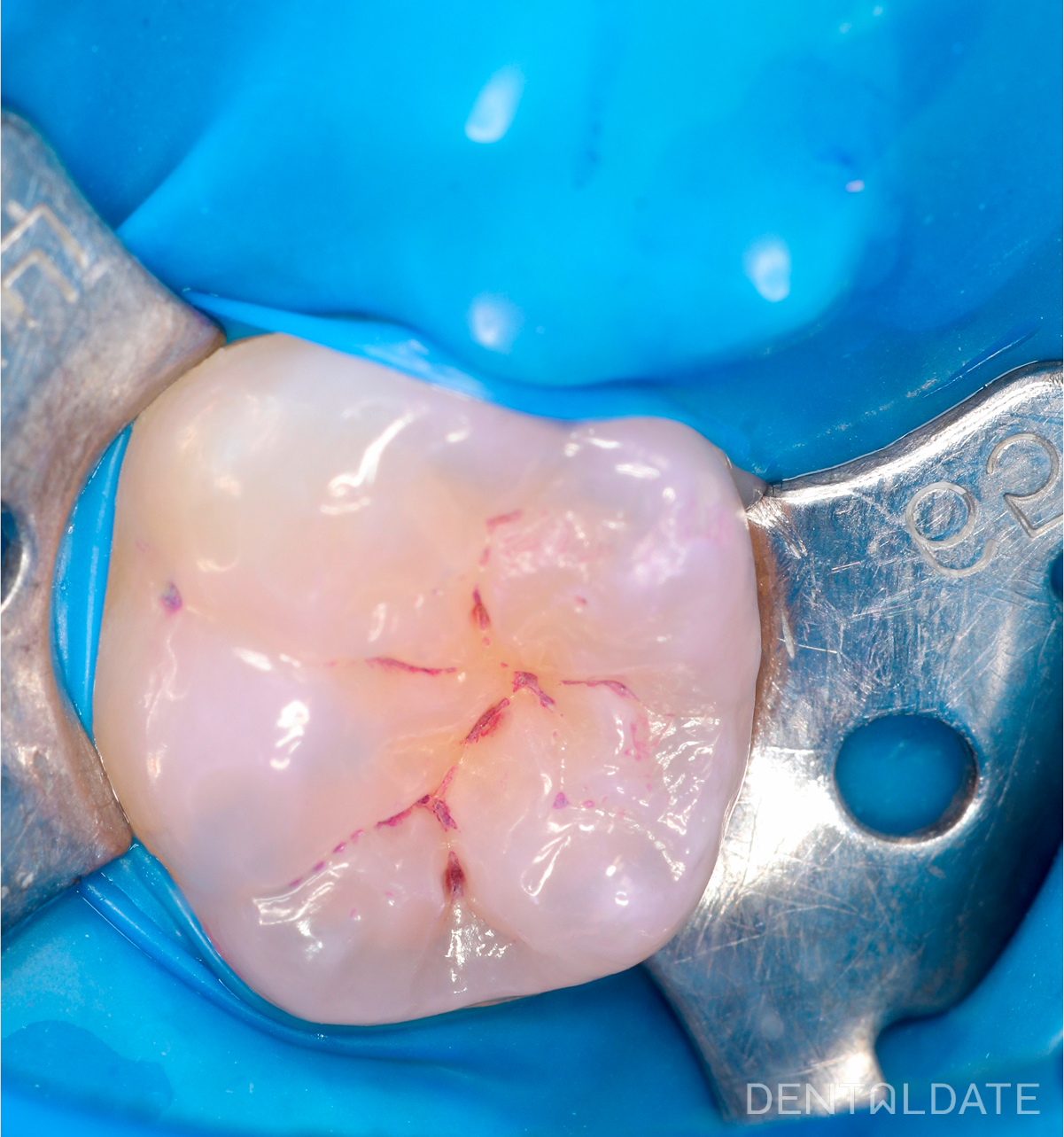Treatment steps
- Local anesthesia was administered to ensure complete patient comfort.
- A rubber dam was placed to isolate the tooth and protect it from saliva.
- Careful removal of the decayed tissues was performed, preserving as much healthy dentin as possible.
- The cavity was restored with a high-quality composite material matched to the tooth shade.
As a result, the tooth regained both its function and aesthetics, and the child was able to chew comfortably on both sides. At the next visit, we plan to continue caries treatment on the opposite side.
Conclusion: Modern treatment of caries in primary teeth is fast, painless, and reliable. It helps preserve the tooth until its natural replacement and prevents complications that may affect the permanent dentition.
Why this is important
Many parents underestimate the importance of baby teeth, believing that “they will fall out anyway.” However, primary teeth play a crucial role — they maintain the proper space for permanent teeth, support jaw development, and help a child chew and speak normally.
If tooth decay in baby teeth is left untreated:
- food continues to get stuck between the teeth, worsening gum inflammation and potentially causing pain;
- infection spreads deeper, affecting the developing buds of permanent teeth;
- premature loss of a baby tooth causes neighboring teeth to shift, leaving insufficient space for permanent teeth to erupt correctly in the future.
Timely treatment helps maintain the natural balance in a child’s oral cavity, prevent complications, and create the right conditions for proper bite development.
Moreover, a painless and comfortable dental experience helps a child form a positive attitude toward dental care in the future.














